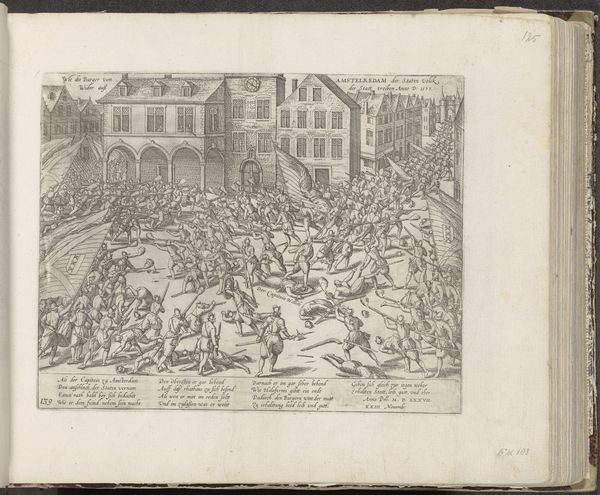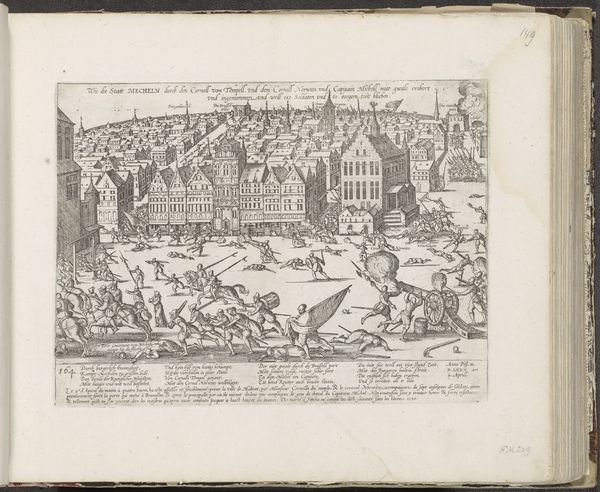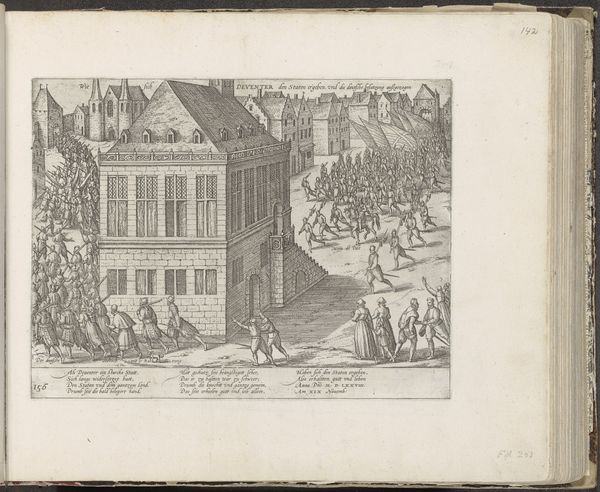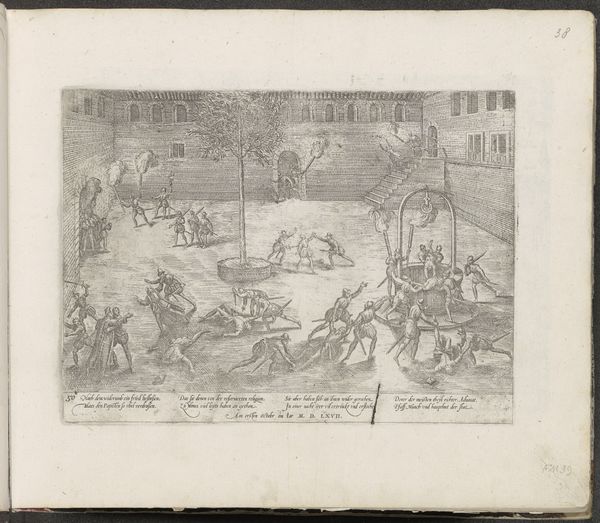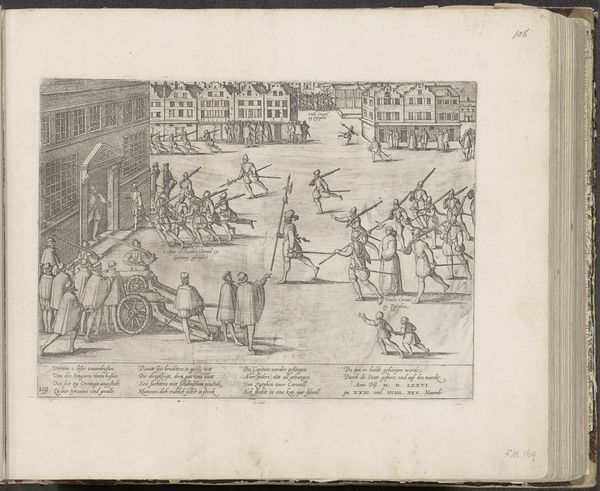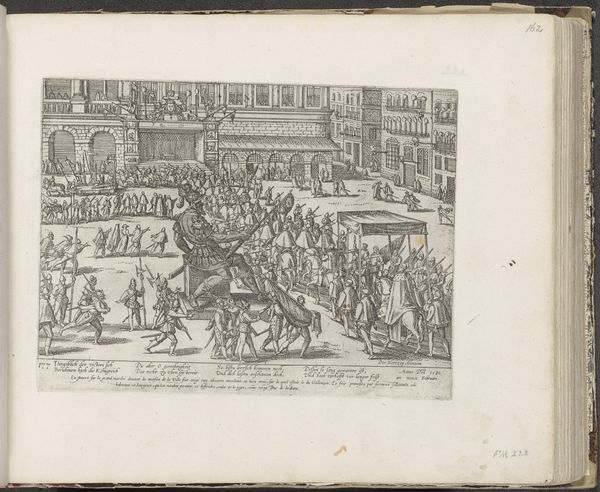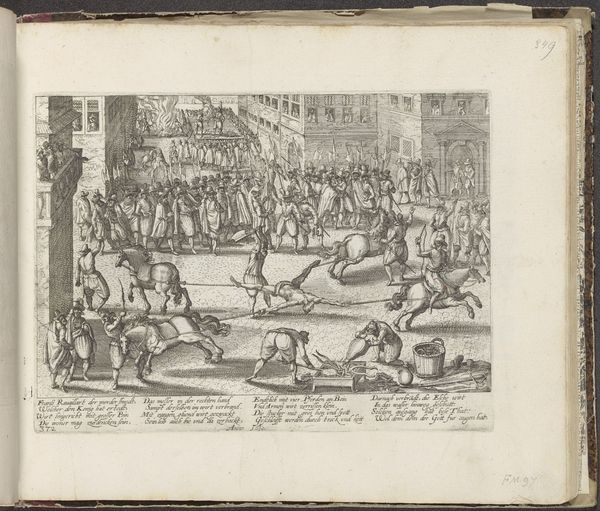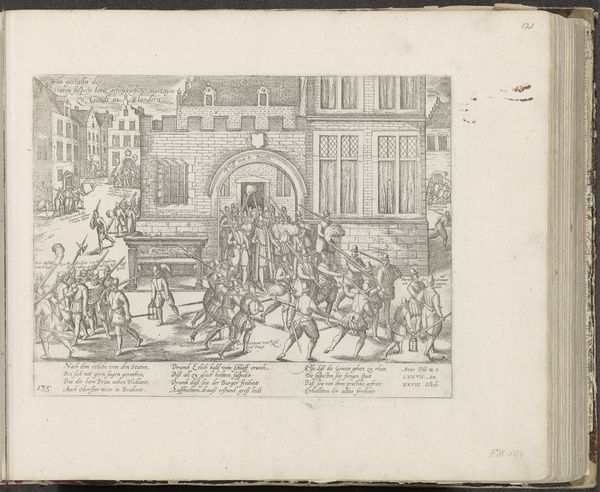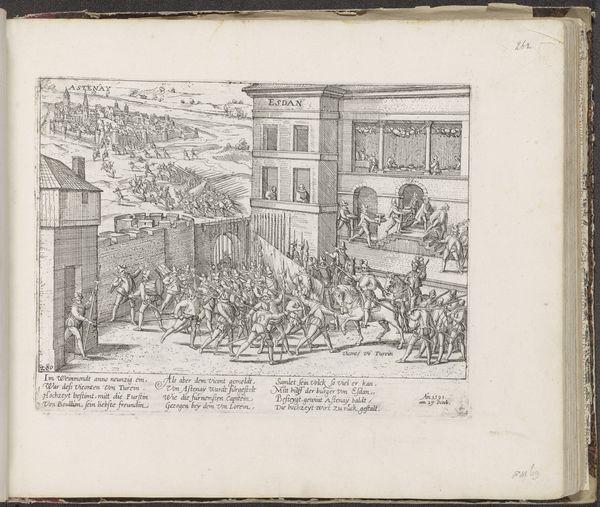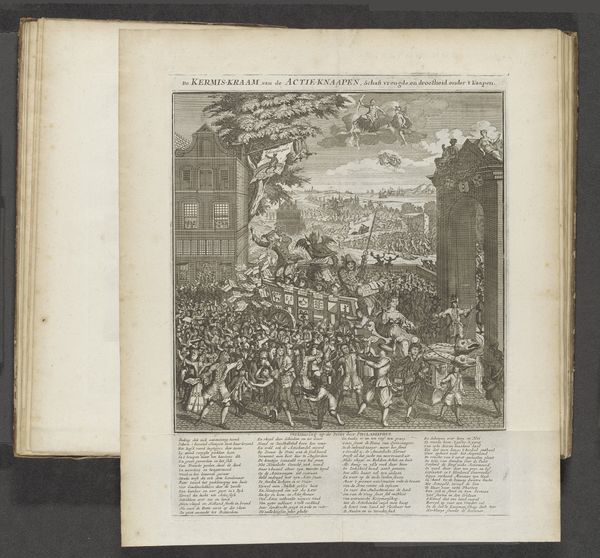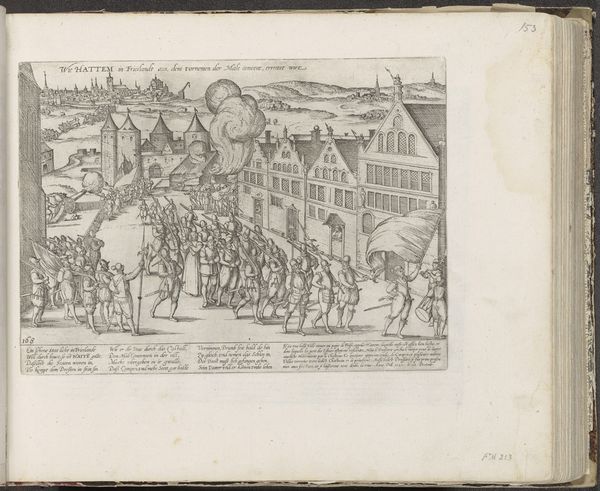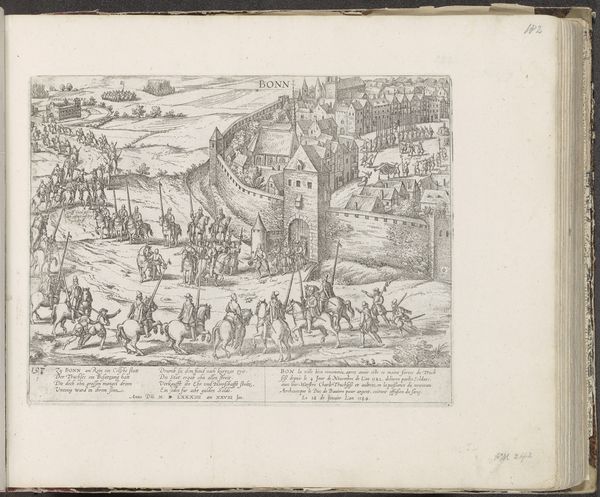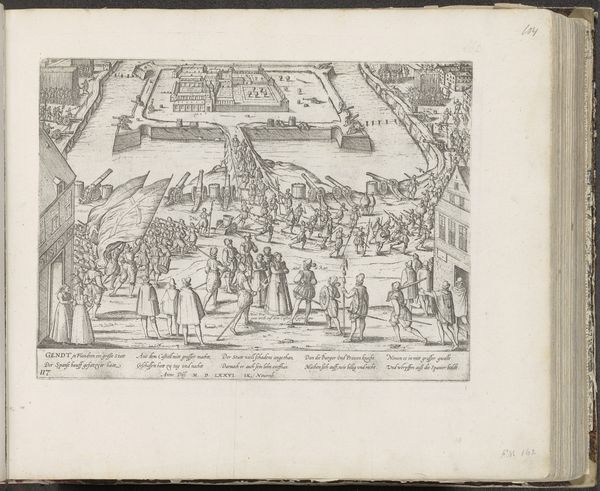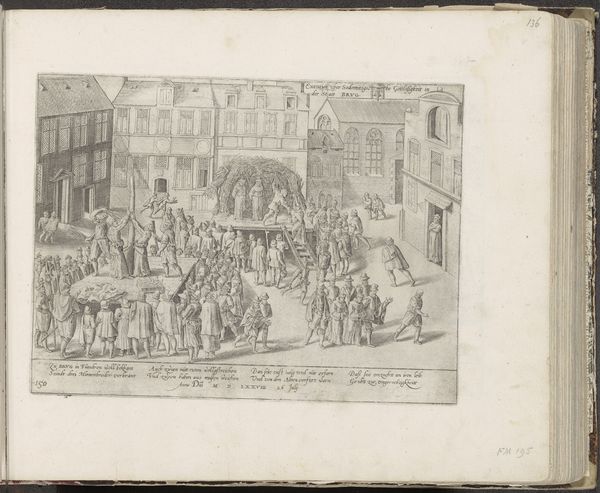
print, engraving
# print
#
mannerism
#
cityscape
#
history-painting
#
engraving
Dimensions: height 210 mm, width 282 mm
Copyright: Rijks Museum: Open Domain
Curator: Here we have "Kortrijk ingenomen door de Malcontenten, 1580", an engraving created circa 1581-1585 by Frans Hogenberg. It currently resides in the Rijksmuseum. What strikes you first about this piece? Editor: Utter chaos. The swirling lines of the composition definitely convey the tumult of battle, the eye struggling to find a point of rest amid the violence. Curator: Indeed. Let's consider the materiality of this engraving. The precision required to render such a scene on a metal plate, and then reproduce it, speaks to a very specific skill, as well as the burgeoning printing industry that helped disseminate such images widely. Editor: And what is being disseminated is not merely news but a visual shorthand. Fire, fighting figures, flags – these are age-old symbols for war, of course, but they speak to a deeper anxiety regarding societal upheaval. Consider how flags can instill pride and division, all at once. Curator: That’s interesting. I’m struck by the fact that we, as viewers, are removed but still deeply embedded in the chaos. This wasn't just a document, but propaganda intended to stir sentiment through depictions of very graphic violence. What do you make of its ambition? Editor: It certainly is ambitious. It is also intended to invoke strong memories of violence. Even the smallest figures and structures resonate with meaning, don't they? The towers reaching into the sky—asserting authority and civilization—while below them, the brutal, earthly realities of conflict unfold. The figures falling parallel to these strong towers seem symbolically very heavy-handed. Curator: A reminder of vulnerability, certainly. What do you think its continued display means for our current moment? Editor: Perhaps the engraving’s enduring value lies in its stark portrayal of the cycles of conflict. Symbols change, but the core experiences – loss, struggle, and the fight for dominance – seem stubbornly, distressingly constant. Curator: A compelling and bleak idea. Thinking about its cultural endurance allows us a richer, much deeper connection to this work.
Comments
No comments
Be the first to comment and join the conversation on the ultimate creative platform.
